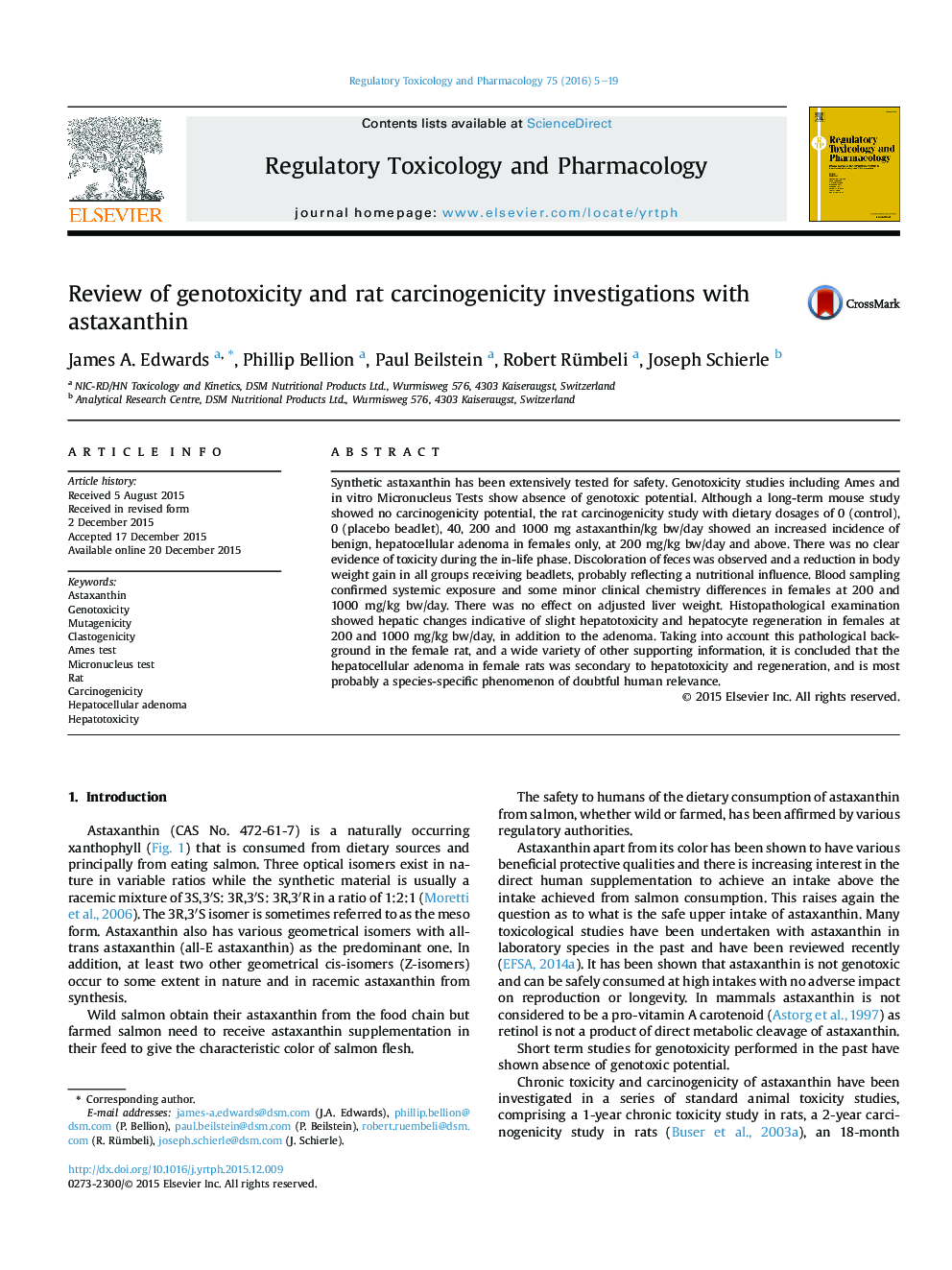| Article ID | Journal | Published Year | Pages | File Type |
|---|---|---|---|---|
| 5856116 | Regulatory Toxicology and Pharmacology | 2016 | 15 Pages |
Abstract
Synthetic astaxanthin has been extensively tested for safety. Genotoxicity studies including Ames and in vitro Micronucleus Tests show absence of genotoxic potential. Although a long-term mouse study showed no carcinogenicity potential, the rat carcinogenicity study with dietary dosages of 0 (control), 0 (placebo beadlet), 40, 200 and 1000 mg astaxanthin/kg bw/day showed an increased incidence of benign, hepatocellular adenoma in females only, at 200 mg/kg bw/day and above. There was no clear evidence of toxicity during the in-life phase. Discoloration of feces was observed and a reduction in body weight gain in all groups receiving beadlets, probably reflecting a nutritional influence. Blood sampling confirmed systemic exposure and some minor clinical chemistry differences in females at 200 and 1000 mg/kg bw/day. There was no effect on adjusted liver weight. Histopathological examination showed hepatic changes indicative of slight hepatotoxicity and hepatocyte regeneration in females at 200 and 1000 mg/kg bw/day, in addition to the adenoma. Taking into account this pathological background in the female rat, and a wide variety of other supporting information, it is concluded that the hepatocellular adenoma in female rats was secondary to hepatotoxicity and regeneration, and is most probably a species-specific phenomenon of doubtful human relevance.
Keywords
Related Topics
Life Sciences
Environmental Science
Health, Toxicology and Mutagenesis
Authors
James A. Edwards, Phillip Bellion, Paul Beilstein, Robert Rümbeli, Joseph Schierle,
